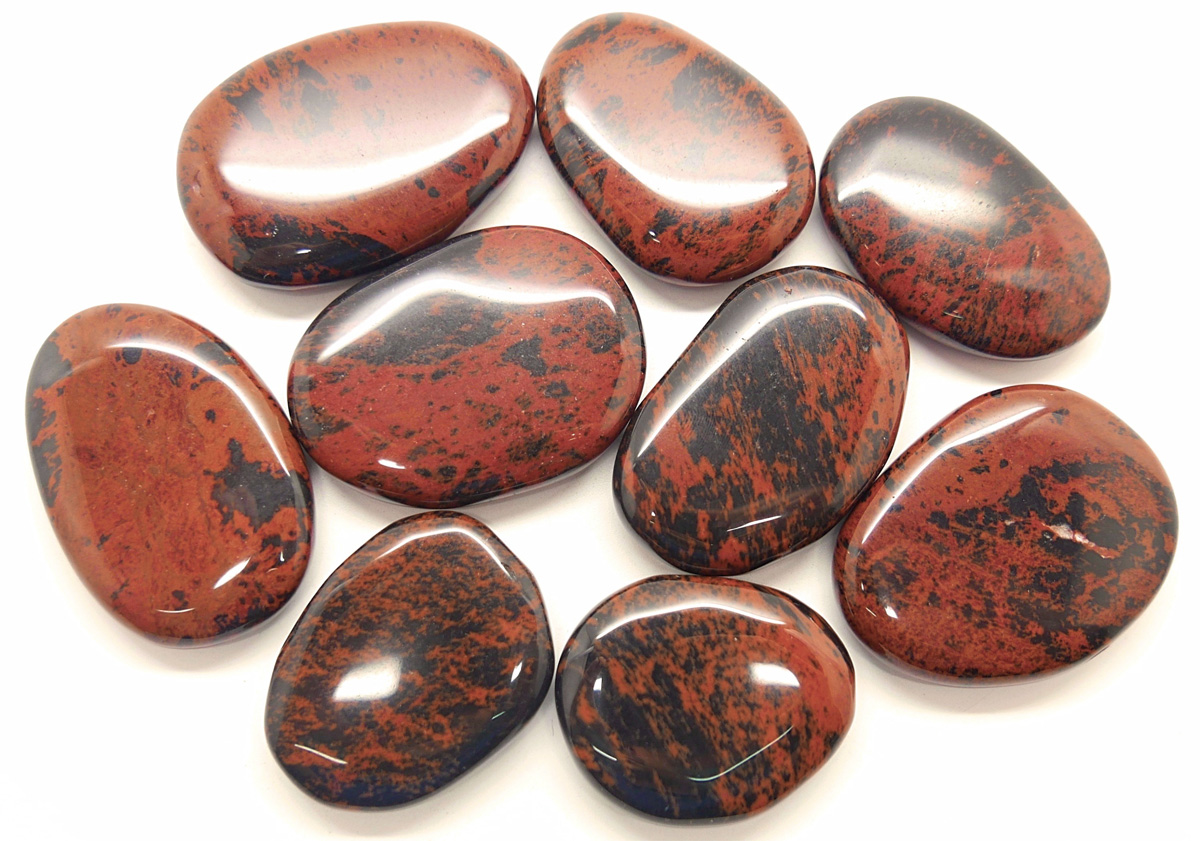
PHYSICAL PROPERTIES
- TYPE OF ROCKFelsic, volcanic, igneous
- MAIN MINERALS Glass
- ACCESSORIES MINERALS Hematite, feldspar
- COLOR Black, brown, red
- TEXTURE Amorphous
MINERALOGICAL CHARACTERISTICS
The mahogany obsidian is a variety of obsidian with brown bands due to the presence of iron oxides.
The obsidian is a natural glass of volcanic origin that was formed by the rapid cooling of magmas rich in silicic acid. The lava solidified so quickly that the minerals did not have time to crystallize. It is characterized by its conchoidal fracture and can be translucent to opaque.
The obsidian is usually black in color but there are also different varieties with brown, red, gold or gray tones, due to the presence of inclusions of iron oxides, gas bubbles or spherulites clear. Depending on how it is carved, the surface of obsidian can change color (dichroism).
Depending on its color and appearance, obsidian receives different names. In addition to the black obsidian we find the rainbow obsidian (black with reflections of color bands), golden obsidian (black with gold or silver reflection), mahogany obsidian (brown with black spots), snowy obsidian (black with circular gray spots) and apache tear obsidian (black and nodular). There are also obsidian with blue, greenish and red tones.
The name of obsidian comes from the Latin "lapis obsianus", "obsidian stone", which derives from Obsius, supposedly a Roman explorer or naturalist, whom he makes reference Pliny (1st century AD).
In ancient times, obsidian was highly valued thanks to its conchoidal fracture, which allows the creation of very sharp points and cutting tools. It was also used as an amulet and as ornamentation. Mesoamerican cultures polished obsidian to make mirrors, since it has a vitreous and reflective shine. Currently obsidian is used in the manufacture of jewelry, in ornamentation and in the manufacture of cutting blades for surgery.
Deposits: Mexico, United States and Indonesia.
THERAPEUTIC PROPERTIES
The mahogany obsidian is considered a powerful stone for personal growth. It is used for protection, cleansing and purification. Mahogany obsidian is said to have a more delicate energy than black. It favors the connection with the earth and the balance of the sacral and solar plexus chakras.
The obsidian is known for its strength and its healing properties. Symbolically it represents the "mirror" to which the totality of being is reflected, with its shadow and its light.
One of its characteristics is to directly show those limiting and shadowed aspects of oneself, in order to give them the opportunity to heal, release or integrate them. For this purpose, it can bring to light blockages, traumas and memories of the past. It is recommended to be aware of its properties and its mobilizing capacity before using it.


